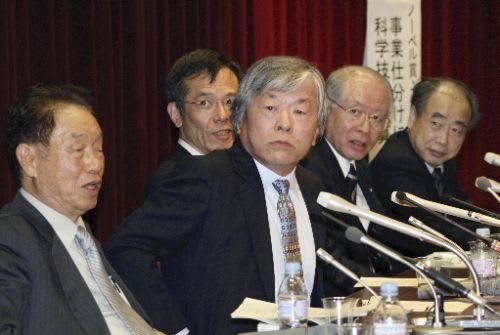Panacea-BOCAF On-Line University下記の文章は、『Ravi Cell(英語45ページPDF)』の解説をしているサイトhttp://h2o0il.com/の翻訳です。
詳しく読みたい方は、PDFをダウンロードして読んでください。Research Paper on Ravi’s Water Fuel cell Replication [Stanley Allen Meyer Page 35]ConditioningThe
conditioning time was pretty long. The surface forms a layer of Nickel
oxides along with Chromium oxide as well and in the case of 316L you
have @ 2% Molybdenum in the SS alloy but you could be right about the
Cr oxides acting as a dielectric. Nickel passivates in air and forms
oxides like Zinc in galvanised form. Example: incase you need to
electroplate on nickel you need to reactivate the surface layer before
the plating process or the plated layer just peels off.
調
節時間はかなり長かったです。
表面はクロム酸化物と共にニッケル酸化物の層をうまく形成し、そして、316Lの場合では、SS合金に@2%のモリブデンが含まれていますが、誘電体とし
てクロム酸化物が作用することはあり得るかもしれません。ニッケルは、空気や酸性物質により不動態化され、亜鉛メッキされたような状態になります。[不
動態:金属の表面に酸化した被膜(薄膜)ができ、内部を酸による腐食や、酸化などから保護する状態のこと。非常に酸化力の強い酸に曝された金属の表面にも
不動態ができる場合がある。ステンレス鋼は、特に極薄の不動態皮膜によって耐食性が安定に維持される。酸化剤、例えば硝酸などによるステンレス鋼(12%
以上のCrを含有する316L)の不動態化現象は、酸化剤の作用(電子を吸い取る)で、目に見えない透明な厚み1~3nm
の水和オキシ水酸化クロム(他の元素の濃縮はない)が合金表面上に形成される現象である。したがって、酸化力のない環境では不動態皮膜は生成されない。] 用例:電解ニッケルメッキが必要な場合、メッキ行程前またはメッキされていた場合は、一皮剥くかメッキを剥がし表層を復活させる必要があります。The
initial conditioning is very very important and I recommend to use the
process I posted as with lesser Amps you form a thin fine grain layer
and once you increase the Amps the grain size of the deposition layer
increases. The bigger grains can come off the surface easily...so once
you do this you go back to the longer time low Amp conditioning in the
process I posted...this again reinforces the larger grains deposited
during the high Amp conditioning to bond to the base / previous layer.
I have never posted this info before but this is the reason why
different Amp levels are used in the process. I have to give the
reasoning for the low Amp conditioning as a lot of replications seem to
be taking the short cut method of conditioning at high Amps to save
time.
初期の調節は非常に非常に重要です、そして、私が掲示した、最初に少ないアンペアで
薄い細い粒子のコートを形成し、その後、アンペアを増加して多くの大きな粒子のコートを積層させる調節を推奨します。大きな粒子のコートは、表面から容易
にとれてしまいます... とれてしまった場合は、もう一回はじめから少ないアンペアで行う方法、私が示した調節をやり直してください... この作業
は、大きな粒子のコートを再びベース/前の層に接着し補強します。私は、以前、このインフォメーションを一度も掲示したことがありませんが、これが異なっ
たアンペアレベルで調節を行う理由です。
たくさんの複製が、調節時間を節約するために高いアンペアで調節する方法を取っているようなので、私は低アンペア調節のための推論を与える必要がありま
す。PLEASE DONOT GO ABOUT CONDITIONING WITH HIGH AMPS ONLY
AS YOU'LL ENDUP HAVING A WEAKLY BONDED COAT. LOW AMP CONDITIONING IN
EXTREMELY IMPORTANT FOR PROPER BONDING OF LAYERS TO THE BASE METAL and
the previous layers. FOLLOW THE POSTED PROCEDURE. It’s a time consuming
process but worth the effort. The bond strength of the layer can be
increased further as after every cycle of conditioning you need to stop
for at least an hour. During this period you can let the pipes air dry
only after every cycle...this compacts the layer even more due to the
loss of moisture from the surface...then change water and go about the
conditioning cycle. Never touch the layer till it dries up completely.
弱
々しく接着されたコーティングになりますので、高いアンペアのみでの調節には取り組まないでください。
低アンぺアでの調節は、コートの適切な接着のため非常に重要な行程です。 掲示された手順に従ってください。
それは、時間のかかる行程ですが努力に値する価値があります。コートの付着強度は、調節サイクル後のセルを休ませている間(1時間の間)に強化されます。
この期間、調節サイクルの後にだけパイプを空気乾燥できます... これは表面から水分がなくなるため層を固まらせます... 次に、水を変えてくださ
い、そして、調節サイクルに取り組んでください。 完全に乾燥するまでは、コートに決して触れないでください。http://www.mtaonline.net/~hheffner/GlowExper.pdfRavzz
states- IT DESCRIBES WHAT REACTIONS HAPPEN DUE TO CONDITIONING!! IT
SAYS THIS CONDITIONING COAT FORMS IN WATER WITH NICKEL.....WELL SS316L
HAS THE MOST AMOUNT OF NICKEL IN THE 300 SERIES! This even confirms the
reason why there is a glow in the WFC and even confirms that it can be
seen only when its dark...and that’s what I had seen. Looks like this
the key to what happens during and due to conditioning. The doc even
talks about cold fusion taking place in the cell.....and over unity due
to the conditioned coat!! These docs should put an end to the reason
why conditioning is so important and why the step conditioning needs to
be followed.
ラビ氏は、提示する -
それは、どんな反応がこの調節で起きているのかを記述します!
この調節でできるコーティングが、水とニッケルで形成されることを示します..... そして、SS316Lは300のシリーズの中で最も多くの量のニッ
ケルが含まれています!これは、その理由の裏付けになります、なぜ、暗闇でWFCの輝き(光っている)を見る事ができるのか... それは、私が実際に見
たものです。[プラズマかもしれない] これが、調節中および調節のために何が起こっている
かの、カギになります。 資料(document)は、セルの中に起こる常温核融合に関して話しています..... そして、Over Unity
(入力<出力)は、調節されたコートのお陰で起こります!!これらの資料(documents)は、調節がとても重要であり、ステップ調節(低アンペアか
ら行う、ラビ氏の方法)を行う必要がある最終的(決定的)な理由です。http://www.mtaonline.net/~hheffner/BlueAEH.pdfhttp://www.mtaonline.net/~hheffner/GlowExper.pdfhttp://www.mtaonline.net/~hheffner/OrangeGlow.pdfhttp://www.mtaonline.net/~hheffner/Key2Free.pdfThe following may be related, could the plasma version of the "diode effect" mentioned in papers previously mentioned above.
以下は関連している可能性があります、上記に記載の論文において言及された「ダイオード効果」のプラズマバージョンはそうすることができました。Additional optionsUsing Delrin
In one of Stan’s patents he talked about using
polyoxymethylene (Delrin)
which has a high dielectric constant. He used Delrin on the outside of
the outer pipe and the inside of the inner pipe to contain the electron
leakage. The barrier formed by the conditioning coating has a
comparatively lesser dielectric constant than the Derlin material
thickness used.
スタン氏の特許のうちのオプションの1つは、高い誘電率(絶縁性)
を持っているポリオキシメチレン(デルリン)を使うことについて述べています。彼は、リークを防ぐために、アウターパイプの外側とインナーパイプの内側に
デルリンを使用しました。調節(以下で説明)コーティングで形成されたバリアは、デルリンの材料厚より薄く、比較的少ない誘電率を持っています。Slots cut into the outer pipesThe
picture below clearly shows there are slots in Stanley Meyers tubes,
light can be seen though the slots eliminating the possibility of it
being spacers. A Rectangular slot cut in the top of each tube can
clearly be seen.
下の写真は、スタンレー・マイヤー氏のチューブにスロットがあることをはっきりと示し、後ろの光が透けているのでスペーサーである可能性はなく、チューブが取り除かれたスロットです。 個々のチューブのトップに切開された矩形のスロットがはっきりと見てとれます。
Stan’s cell in operation ? Scene is taken from a documentary on Meyers
Since
we are dealing with an acoustic resonance it makes sense to create
slots in the positive of the tubes to help mimic the resonant frequency
of the negative tubes. It is not known for sure why Stan did this at
this time. Please consult the original D14 document for more back round.
ここでは音響共鳴を扱っているので、(+)極チューブにスロットを作成して(-)極のチューブの共鳴周波数に近づける手助けをしています。 スタン氏がなぜ、これをしたかは確かに知られていません。 詳しくオリジナルのD14文書を参照してください。
WFC by spike
The
original D14 document described a way to create the same resonant pitch
when constructing. Please consult the original D14 document. An
engineer has contacted Panacea and offers the following advice.
Message: I have duplicated Stan Meyer's work, and have taken it several steps forward.
First,
during assembly of the generator, I have found that you must tune the
tubes to the same pitch. I do it with a simple guitar tuner. Just clip
it to the tube and strike it with a small brass (to prevent
polarization) hammer. The easiest way to change the pitch, it's always
the outside tube, grind a notch in it like Stan did.
オ
リジナルのD14文書は、組み立てるときに同じ共鳴周波数にするための方法と述べていました。オリジナルのD14文書を参照してください。
エンジニアは、Panaceaに連絡して以下のアドバイスに従ってください。メッセージ:
私は、スタン・マイヤー氏の仕事をコピーして、いくつかのステップの前にスロットを作りました 。[フルー管の調律:http://blog.livedoor.jp/polymnia/archives/cat_50038725.html]
最初に、ジェネレータのアセンブリの間、私は、チューブを同じピッチ(周波数)に調整しなければならないと気付きました。私は簡単なギターチューナーで、ピッチ調整を行います。[KORG INC:http://www.korg.co.jp/Product/Tuner/] クリップ式チューナーをチューブに留めて、小さい真鍮ハンマー(振動方向の分布を一様にするため)で打ってください。最も簡単なピッチを変えるための方法は、スタン氏が行ったような、外のチューブにV字形の切込みを入れる方法があります。Second,
oscillate it with high voltage, low amperage voltage. Water resonates
at 926khz, and will disassociate at that range. Before conditioning the
generator, briefly dry modulate it in 5 second bursts, with about 2 min
between bursts for about 10 min. You should be able to hear it hum, and
with a practice ear, tell if one set is out of pitch. I also added a
toroid coil, to produce parahydrogen. Tube size is determined by the
diameter of the cell, be it 4, 5, or 6 but the optimum gap between
tubes should remain .045 to .060. Try to maintain the low side. You are
correct, in that it takes at LEAST 2 to 3 months to condition your
tubes. I don't add the toroid until final assembly, and try to maintain
a 1/8' gap from the top of the tubes to the toroid. I am currently
running 70psi in the generator. -End
第二に、高電圧、低ア
ンペアの電圧で、それを振動させてください。水は、926khzの周波数帯で、共鳴して分解するでしょう。ジェネレータを調整する前に、5秒ほど水滴を飛
ばして約2分から10分ほど乾燥させてください。そうすればハミングされるのを聞くことができるはずで、訓練すれば、耳で周波数がずれているセットがわか
るようになるでしょう。私は、パラ水素を生み出すために、トロイドコイルを追加しました。[パラ水素:水素
分子は、それぞれの原子核(プロトン)の核スピンの配向により、オルト(オルソ、ortho)とパラ (para)
の2種類の異性体が存在する。統計的な重みが大きいほうをオルトと呼ぶ。オルト水素は、互いの原子核のスピンの向きが平行で、パラ水素ではスピンの向きが
反平行である。オルト水素とパラ水素は、化学的性質に違いがないが、物理的性質(比熱や熱伝導率など)が若干異なる。] チューブのサイズ
はセルの直径によって決定されます、4インチ(101.6mm)、5インチ(127mm)、6インチ(152.4mm)にかかわらず、チューブの最適な
ギャップは、0.045インチ(1.143mm)から0.060インチ(1.524mm)の間であるべきです。低い側を採用してください。チューブを調節
するために、最小で
2~3ヶ月に取るという認識で正しい。私は最終的なアセンブリまで、トロイドを追加せず、チューブの上部からトロイドまで1/8インチ(3.175mm)
のギャップを試しました。 私は、現在、ジェネレータを70psi = 4.921kg/cm2で動作させてます。- おわりCold Current CircuitIf
you are experimenting with the cold current circuit, and wish to alter
the values of the circuit components for example the capacitors. Please
keep the following in mind. Ignoring some relatively minor construction
features, capacitors are all the same. They act as a reservoir for
electrons. If you have a lot of electrons like in a power supply, then
you need big capacitors - the bigger the better. If you are passing low
frequency AC through a capacitor, then when the signal is high,
electrons will flow into the capacitor. When the signal goes low, those
same electrons will flow back out. You need to make sure that the
storage capacity inside the capacitor is big enough to handle the
current flowing in and out. If the frequency is high, then the signal
is only high for a very short time and so not much storage capacity is
needed. Consequently, high frequency capacitors can be very small in
size. BUT if the capacitor is high quality and has low leakage as a
component, then a large capacitor can do the job at high frequency just
as well (though it is physically bigger, heavier and more expensive) -
just commonsense really.
もしCold
Current回路で実験し、例えば回路部品において、コンデンサーを安く済ませたいと望むならば。以下を覚えておいてください。いくらかの割合で入力を
無視する点で、コンデンサーの動作は共通です。それらは電子の貯蔵所として機能します。もし電源の中のたくさんの電子があるならば、大きいコンデンサーが
必要です-より大きいほうが良い。
もしコンデンサーを通るのが低周波の交流であるならば、電子がコンデンサーに流れこむ時、周波数が高くなるでしょう。信号が低くなるとき、それらの電子は
逆流するでしょう。あなたは、コンデンサーの容量が電子の流れを処理するために十分な容量があるかを確かめる必要があります。もし周波数が高いならば、信
号は非常に短い間、高いだけなので、コンデンサー容量は多い必要はありません。その結果、高周波のコンデンサーのサイズは、非常に小さくなります。もしコ
ンデンサーが高い品質で低漏れ電流品ならば、大きい容量のコンデンサーでも、高周波で仕事をすることができるでしょう。(それは物理的により大きく
より重く、より高価ですが) - 常識的である。When used in a timing or
oscillator circuit, small capacitors fill up faster and as the circuit
switches over when the capacitor is full, the generated frequency is
higher. The rate of current flow into a capacitor is controlled by the
size of the resistor feeding it - the higher the resistor value, the
lower the current flowing through it, the slower the capacitor charges
up, the lower the frequency of the oscillator.
タ
イミングまたは発振回路において使われる時、回路上では小さいコンデンサーがより速く切り替え動作をするので、生成された周波数はより高くなります。コン
デンサーに流れる電流は、抵抗器の大きさによって制御されます。 - 抵抗(Ω)を大きくすると、電流(A)は小さくなる。[E(V)=R(Ω)× I (A)] コンデンサーがよりゆっくりとチャージすればするほど、発振器の周波数はより低くなります。You
will see this in, say, Dave Lawton's circuit where the frequency range
is selected by switching a larger capacitor into the circuit to get a
lower frequency. 47, 10 and 1 microfarad for slow, medium and fast
gating while the high frequency oscillator which is being gated has
0.22, 0.1 and 0.01 microfarad capacitors giving a very much higher
frequency. (The old version was drawn with the switches operating in
opposite directions).There is lots of scope for variations, but
typically, 10 microfarad capacitors are for switching in the 10 Hz or
lower region, 0.1 to 1 microfarad for high audio frequencies, and 0.01
or smaller for ultrasonic or radio frequencies.
デ
イブ・ロートン氏の回路は
、周波数レンジをスイッチにより切り替えられるようになってます。47μF、10μF、1μF、それぞれスロー、ミディアム、ファーストの発振(スイッチ
で切り替え)、
そして、0.22μF(220nF)、0.1μF(100nF)、0.01μF(10nF)のコンデンサー(スイッチで切り替え)によって、より速い周波
数が発振されます。(スイッチがそれぞれ反対の方向に作動している状態で、古いバージョンは描かれました。) 多くのバリエーションがありますが、
10μFコンデンサーが10Hzか少し低い領域で発振し、0.1から1μFは、高い可聴周波数で発振し、そして0.01μFもしくはそれより小さいサイズ
は、超音波またはラジオ周波数での発振になります。[Pulsed Water-splitters No.3(回路の説明) http://ameblo.jp/ghostripon/entry-10332022863.html]
デイブ・ロートン氏の回路(クリック拡大)A
third party has confirmed that after speaking to Dave Lawton on the
phone he expressed the opinion that the size of the capacitors was not
particularly important as the frequency was high. Dave was doubtful
about that and said that the bulb lit better the larger the capacitor
was. So, although some may see no logic for it at all, it is better to
go with very large capacitors.
第三者は、電話でデイブ・ロートン
氏と話しに、彼が周波数が高かったので、コンデンサーのサイズは特に重要ではなかったという意見を述べたと確認しました。デイブ氏は、それに関して疑問を
持っており、コンデンサーの容量が大きい方が、電球をより明るく点灯させたと言いました。従って、そのためのロジックを全然見つける事ができないけれど
も、非常に大容量コンデンサの方が良いです。Note ?on the circuit it looks as it
is a DC cap. There is no such thing as "an AC capacitor" or "a DC
capacitor" there are just "capacitors". They are all the same, with the
slight exception of manufacturing differences in the materials used.
Tantalum has minimal leakage and can hold their charge for days on end,
but they don't go above 1 mF in capacity. Electrolytic capacitors can
have massive capacities but their leakage can be massive with the
charge bleeding off rapidly from really big ones. So there is no AC or
DC capacitors, just "capacitors" and any of them can be used for any
application. Low capacitances can't handle low frequencies properly as
they fill up long before the waveform has returned to zero, so the
waveform gets chopped off and highly distorted.
注
意 -
回路上では、DCコンデンサーであるように見えます。「ACコンデンサー」または「DCコンデンサー」というものは無く、それは、ただの「コンデンサー」
です。それらは、使われた素材の製造差の例外でみんな同じです。タンタルは最小量の漏れで、数日の間チャージを保持できますが、容量は1μFより大きくで
きません。電解コンデンサーは大きな容量を持つことができますが、それらの漏れは大きく急速であるかもしれません。交流用または直流用のコンデンサーはな
いので、どのような用途でも「コンデンサー」として使用できます。低い容量のコンデンサーは、波形がゼロに戻る長い間の前に放出してしまうので、低周波を
適切に処理できません。従って、波形は切りとられ、高度にひずんだ形になります。By showing the
capacitors that Dave used, without making it clear that he used those
capacitors as they happened to be sitting on his bench at the time he
was experimenting with the circuit. It is highly likely that any
electrolytic capacitor will work in that position. Just whack one in
and see if it works well. A 'common-or-garden' 1000mF would probably do
very well - just try whatever is to hand. It is definitely NOT the case
that Dave tested lots of capacitors and found that the only ones that
worked were the ones shown in the circuit.
[わかり
辛いので概要だけ。デイブ氏の回路図にある、555タイマーチップにつながるコンデンサ(各チップの3種類)の選定は、実験結果から効果的なものを選んだ
のではなく、「こんなもんだろう」と勝手に決めたもので、正確ではないと言うことのようです。ですので、最適な組合せを探せるように、調整可能になってい
るようです。詳しくは、リンクを参照願います。Pulsed Water-splitters No.3(回路の説明) http://ameblo.jp/ghostripon/entry-10332022863.html]
Analogy of the cold current circuit by Taoこの次に書かれているEEC回路は、追加の機器のようなので保留にします。
(理由は、解読するのに時間がかかりそうなので)
NEXT>>Water Fuel Cell Voltrolysis Replication No.6
http://ameblo.jp/ghostripon/entry-10357447751.htmlとりあえず、ここまでで水の分解を理解できると思います。
理論を伴った複製品を作る事も可能でしょう。
補足でもう一度、デイブ氏のレポートを読んで頂ければ完璧だとと思います。
Pulsed Water-splitters No.1(パルスを用いた水の分解)
http://ameblo.jp/ghostripon/entry-10330994478.html■過去記事
Water Fuel Cell Voltrolysis Replication No.1
http://ameblo.jp/ghostripon/entry-10346485209.htmlWater Fuel Cell Voltrolysis Replication No.2
http://ameblo.jp/ghostripon/entry-10347229739.htmlWater Fuel Cell Voltrolysis Replication No.3
http://ameblo.jp/ghostripon/entry-10349626443.htmlWater Fuel Cell Voltrolysis Replication No.4
http://ameblo.jp/ghostripon/entry-10350464658.html■関連記事
Stanley Meyer Data特許資料(英文) [pdf 221ページ]
http://www.free-energy-info.co.uk/MeyerData.pdfStanley Meyer - It Runs On Water(水で走る自動車)
http://ameblo.jp/ghostripon/entry-10328859717.html【資料】Stanley Meyer - It Runs On Water(水で走る自動車)
http://ameblo.jp/ghostripon/entry-10330431267.html【資料2】Stanley Meyer - It Runs On Water(水で走る自動車)
http://ameblo.jp/ghostripon/entry-10342515816.html各セル構造の比較&検証(パルスを用いた水の分解)
http://ameblo.jp/ghostripon/entry-10335356396.html
<script charset="UTF-8" type="text/javascript" src="http://ad.ameba.adlantis.jp/ad/load_script?zid=F%252FYv4GqXcTQgBL%252FWSfuWow%253D%253D&ref=http://hyouhei03.blogzine.jp/tumuzikaze/2009/11/post_5d89.html&callbackid=ads0&amebaAdParam="></script><script charset="UTF-8" type="text/javascript" src="http://ad.ameba.adlantis.jp/ad/load_script?zid=hylEe%252Byv%252BnCZSgRqXFPh1w%253D%253D&ref=http://hyouhei03.blogzine.jp/tumuzikaze/2009/11/post_5d89.html&callbackid=ads1&amebaAdParam="></script><script charset="UTF-8" type="text/javascript" src="http://ad.ameba.adlantis.jp/ad/load_script?zid=G4cW9gs6iTwzRfRPN0jU7Q%253D%253D&ref=http://hyouhei03.blogzine.jp/tumuzikaze/2009/11/post_5d89.html&callbackid=ads2&amebaAdParam="></script><script charset="UTF-8" type="text/javascript" src="http://ad.ameba.adlantis.jp/ad/load_script?zid=EbUsbsZaHjzf2zlDGCnLEg%253D%253D&ref=http://hyouhei03.blogzine.jp/tumuzikaze/2009/11/post_5d89.html&callbackid=ads3&amebaAdParam="></script><script charset="UTF-8" type="text/javascript" src="http://ad.ameba.adlantis.jp/ad/load_script?zid=CwunhIMUUFee2BMOU3vBvA%253D%253D&ref=http://hyouhei03.blogzine.jp/tumuzikaze/2009/11/post_5d89.html&callbackid=ads4&amebaAdParam="></script><script charset="UTF-8" type="text/javascript" src="http://ad.ameba.adlantis.jp/ad/load_script?zid=DhZ%252FwKjD4EabjaLADx%252B%252BLA%253D%253D&ref=http://hyouhei03.blogzine.jp/tumuzikaze/2009/11/post_5d89.html&callbackid=ads5&amebaAdParam="></script>


















































